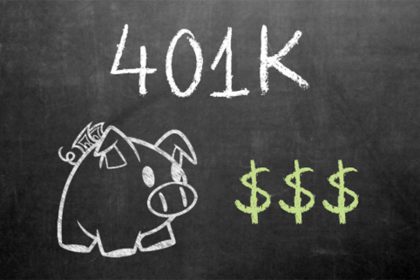How Do Teacher Retirement Plans Work?
If you are thinking about becoming a teacher, or are just starting out your career, you might be wondering how teacher retirement plans work? Hopefully this article will give you a good overview of these plans and give you a chance to make some retirement estimates for your state or the states where you might be interested in teaching.
First of all, keep in mind that if you are currently a teacher the best place to get the most detailed information about your retirement plan is from an advisor for your state’s retirement program or your district HR office and/or your union representative.
Defined benefit plan vs. Defined contribution plan
If you are looking to teach in a public school your retirement plan will most likely be what is called a defined benefit plan, aka a pension, managed by your state government.
If you are looking to teach in a private or charter school your retirement plan will likely be a defined contribution plan, or a retirement account like a 401k, 403b, etc.
What’s the difference? Well as short and simple as possible, both plans involve both you and your employer making contributions to the plan while you are working and then you receive payments from the plan during your retirement years. But there are significant differences between these plans.
Pension – Defined Benefit Plan

With a pension you receive a specific amount, usually monthly, for the rest of your life once you retire. With a retirement account you and your employer deposit a specific amount into the account while you are working that you then live off of in retirement.
A pension is called a defined benefit plan because once you have worked a required number of years you are considered vested and are able to receive predetermined payments from that plan for as long as you live after you retire from teaching. Many pensions also have a survivor benefit that entitles your beneficiary, usually a spouse, to receive benefits if they live longer than you.
An obvious advantage of a pension is that you can count on receiving a known benefit for the rest of your life after you retire.
The longer you work the higher the amount you will receive. An obvious advantage of a pension is that you can count on receiving a known benefit for the rest of your life after you retire. A disadvantage is that if you leave your job before you have enough years of service to become vested you do not qualify for the pension. However, most pension plans have a way for you to transfer some or all of the money you have contributed to another retirement plan, sometimes known as its cash value. Another disadvantage is that the accumulated pension value is not usually easy to transfer, or take with you, if you move to another state and teach there.
 Explore the teaching profession
Explore the teaching profession
Retirement Account – Defined contribution plan
A defined contribution plan, sometimes called a retirement account, is basically a retirement savings account that you and your employer contribute to while you work that is yours to use during your retirement.
Within the guidelines of these accounts, you can choose how to invest the funds in your account and the accumulated interest/value adds to the overall account balance. An advantage of these types of plans is that the account is yours from the beginning and you maintain access to it no matter how long you teach or where you go during your career. A disadvantage is the amount in the account when you retire is the amount you have to live on after retirement and when it’s used up that’s it. Also, the amount in the account is dependent on the performance of the investments over time. So the balance will rise (or even fall) based on the economy and the types of investments you choose to put the funds into throughout your working years and even afterwards.
One point to take note of is that a few states are starting to implement a hybrid retirement plan for new teachers entering the workforce in those states. The hybrid plans are a blend of both types of plans; a pension plan with a retirement account. At the time this article was written there were four states that use a hybrid plan (HI, KS, MI, RI) and two states (AK, FL) that use a retirement account or defined contribution plan.
What will my pension payment be?
One of the biggest questions people have involving teacher pensions is estimating the amount of the pension payment they will receive when they retire. This amount is typically based on three things:
- the number of years of service you have earned while teaching;
- your final average salary; and
- the state’s pension multiplier.
 The rest of this article will focus on explaining these values and how to use them to estimate the size of a pension.
The rest of this article will focus on explaining these values and how to use them to estimate the size of a pension.
The years of service (YOS) is basically the number of years you teach before retirement in the state you are estimating the pension for. A typical number to use would be 30 years but you can use other values for the YOS for the estimate. There are also many teachers who teach for 35 years. Keep in mind that many states reduce the pension for teachers who retire with less than 30 years of service and who are under a certain age like 60 or 65. This is called the Penalty for Early Retirement. Using 30 to 35 years of service is a good rule of thumb for comparing pensions from various states. This means that someone who enters teaching before age 25 with a bachelor’s and accumulates 30 or more years of service can usually retire sometime between age 55 and 60. In most states teachers are eligible for retirement without penalty once they turn 60 even with less than 30 years of service.
Generally the average age of teachers at retirement is 59
The final average salary (FAS) is usually an average of the 5 highest (or 3 highest) annual salaries the teacher earned. To estimate this number you have to look up the salary schedules for specific districts where you might be interested in being a teacher or you can call the HR department. Sometimes looking up the salary is pretty easy to do and sometimes it can be tricky. The easiest way is to use a search engine and search for ‘name of school district licensed teacher salary schedule’. Sometimes the salary schedule will be on a separate document and sometimes it is found near the end of the current bargaining agreement for teachers in that district.
Once you find the most recent salary schedule you will need to find the salaries for end-of-career teachers. At the end of a teacher’s career they will most likely be in one of the MA+ categories on the salary schedule. This means they have a Master’s degree plus additional credits. Some salary schedules have categories like MA+15, MA+30 or MA+45. Pick one of those categories and determine the salaries for years 26 through 30 to come up with a five year average. If the salary schedule doesn’t extend to that many years, you will have to use the highest value in the category you chose as the final salary for every year after the last year on the schedule. Keep in mind that those are the salaries for end-of-career teachers right now. 25 to 30 years from now the salaries will be much higher due to cost of living and other increases.
In addition to the base salary shown on the tables, many teachers earn extra duty pay for extra work in the district like coaching, mentoring, tutoring, subbing, etc. These would all be added on to their salary as well to determine the FAS when calculating their pension.
The final piece of information needed to estimate a pension is the pension multiplier for the state(s) you are interested in. This number is a percent usually between 1% and 3%. Here is a spreadsheet you can use to look up information about teacher’s retirement plans from all 50 states. The multiplier for each state is found in Column K of the spreadsheet.
Let’s do an example. Let’s say you are interested in teaching in Iowa and you looked up a salary schedule for a district in Iowa where you would like to teach. In Iowa you find the FAS by using the 5 highest salary years (see Column P). For the example let’s say you determine the FAS from years 26 through 30 on the salary schedule and come up with about $80,000 for the FAS. In Iowa Column M shows that you must either be age 62 or your YOS plus age must equal 88 to receive full benefits. Assuming you start teaching at age 23 then you could retire at age 56 with 33 YOS. (Column R shows the penalty if you retired before meeting the 88 rule.) The multiplier is 2% for the first 30 years and 1% for each additional year so the estimated pension would be calculated like this: YOS x FAS x multiplier (for each multiplier)
(30 x 80,000 x 0.02) + (3 x 80,000 x 0.01) = $48,000 + $2,400 = $50,400
So the estimated pension in this Iowa scenario would be $50,400 a year for the rest of your life after retirement. In addition you’ll receive your social security benefits once you reach the eligible age. Many states also have cost of living increases built into their annual payments.
You can choose to set up your pension with survivor benefits if you want a beneficiary to get your pension if you die before they do, which will usually reduce your annual payments.
Social Security
 One final consideration to think about when planning ahead for retirement is Social Security. There are about 14 states where teachers do not pay into the Social Security system while they are working as teachers and therefore do not qualify for SS benefits in retirement. This information is found in Column L of the spreadsheet.
One final consideration to think about when planning ahead for retirement is Social Security. There are about 14 states where teachers do not pay into the Social Security system while they are working as teachers and therefore do not qualify for SS benefits in retirement. This information is found in Column L of the spreadsheet.
In the example above from Iowa you can see in the spreadsheet that Iowa is a SS state so this teacher would have paid into the SS system while working and would be able to collect SS benefits in addition to their pension once they meet the SS benefits requirements.
Advantages to teachers who work in a non-SS state is that their take-home pay is higher throughout their career due to SS taxes not being deducted and the pensions in these states are generally, but not always, higher.
Conclusion
Teacher’s pensions may seem complex at first glance but once you try out a few calculations it’s not too hard to come up with an estimate. Remember that this article provides general information on teacher pensions and if you need more specific details on your situation or possible future situation you should talk with an advisor with your state’s retirement program, the district HR office, or a teacher’s union representative.
To learn more about being a teacher you can explore the teaching profession here!




